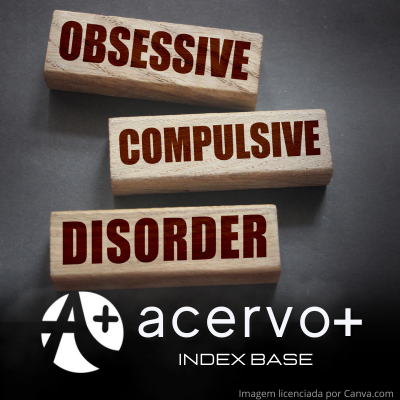Uma abordagem geral do transtorno obsessivo compulsivo
##plugins.themes.bootstrap3.article.main##
Resumo
Objetivo: Analisar as características do Transtorno Obsessivo Compulsivo (TOC). Revisão bibliográfica: O TOC é uma condição psiquiátrica crônica e frequentemente debilitante, com prevalência de 1 a 2% mundialmente. O TOC é caracterizado pela presença de comportamentos obsessivos além de compulsões de maneira recorrente. Este transtorno geralmente é acompanhado por uma série de comorbidades psiquiátricas, qualidade de vida substancialmente reduzida e adversidade socioeconômica de longo prazo. A incidência de TOC é geralmente mais alta durante a pré-adolescência (início médio de 11 anos) e início da idade adulta. O TOC é frequentemente um transtorno devastador tanto para os pacientes quanto para suas famílias. Considerações finais: O TOC é um grave transtorno neuropsiquiátrico que ocasiona problemas nas atividades diárias, prejudica o funcionamento social, acadêmico e laboral. Nesse contexto, sua identificação precoce é essencial para evitar tais danos. Seu tratamento é feito através da farmacoterapia com inibidores seletivos da recaptação da serotonina como medicamentos de primeira linha e terapia cognitivo comportamental, a qual é primeira escolha para o TOC em crianças e adolescentes. A TCC para o TOC deve envolver exposição e prevenção de resposta.
##plugins.themes.bootstrap3.article.details##
Copyright © | Todos os direitos reservados.
A revista detém os direitos autorais exclusivos de publicação deste artigo nos termos da lei 9610/98.
Reprodução parcial
É livre o uso de partes do texto, figuras e questionário do artigo, sendo obrigatória a citação dos autores e revista.
Reprodução total
É expressamente proibida, devendo ser autorizada pela revista.
Referências
2. DE LA CRUZ LF, et al. Morbidity and mortality in obsessive-compulsive disorder: A narrative review. Neurosci Biobehav Rev, 2022; 136: 104602.
3. DEL CASALE A, et al. Psychopharmacological Treatment of Obsessive-Compulsive Disorder (OCD). Curr Neuropharmacol, 2019; 17(8): 710-736.
4. ENDRES D, et al. Immunological causes of obsessive-compulsive disorder: is it time for the concept of an "autoimmune OCD" subtype? Transl Psychiatry, 2022; 12(1): 5.
5. FINEBERG NA, et al. Clinical advances in obsessive-compulsive disorder: a position statement by the International College of Obsessive-Compulsive Spectrum Disorders. Int Clin Psychopharmacol, 2020; 35(4): 173-193.
6. FINEBERG NA, et al. Optimal treatment for obsessive compulsive disorder: a randomized controlled feasibility study of the clinical-effectiveness and cost-effectiveness of cognitive-behavioural therapy, selective serotonin reuptake inhibitors and their combination in the management of obsessive compulsive disorder. Int Clin Psychopharmacol, 2018; 33(6): 334-348.
7. FONTENELLE LF, et al. Early intervention in obsessive-compulsive disorder: From theory to practice. Compr Psychiatry, 2022; 119: 152353.
8. FRÍAS A, et al. Parenting attitudes in people with obsessive-compulsive disorder and emotional symptoms in their children. Clínica y Salud, 2020; 31(2): 91-98.
9. GOODMAN WK, et al. Harmonizing the Neurobiology and Treatment of Obsessive-Compulsive Disorder. Am J Psychiatry, 2021; 178(1): 17-29.
10. HEZEL DM e SIMPSON HB. Exposure and response prevention for obsessive-compulsive disorder: A review and new directions. Indian J Psychiatry, 2019; 61(1): 85-92.
11. LAVALLÉ L, et al. Review of source-monitoring processes in obsessive-compulsive disorder. World J Psychiatry, 2020; 10(2): 12-20.
12. MAHJANI B, et al. Genetics of obsessive-compulsive disorder. Psychol Med, 2021; 51(13): 2247-2259.
13. MARIANO JLP, et al. Características gerais do transtorno obsessivo-compulsivo: artigo de revisão. Atenas Higeia, 2020; 2(3): 22- 29.
14. MARTINS MF e SILVA MR. Estudo sobre transtornos obsessivo-compulsivos: diagnóstico, influências dos mecanismos neuropsicológicos, causas e tratamento. Multitema, 2022; 27(67), 89–110.
15. NAZEER A, et al. Obsessive-compulsive disorder in children and adolescents: epidemiology, diagnosis and management. Transl Pediatr, 2020; 9(1): 76-93.
16. RAJITH RK e KRISHNAKUMAR P. Clinical profile of obsessive-compulsive disorder in children. J Family Med Prim Care, 2022; 11(1): 251-255.
17. RAPINESI C, et al. Brain Stimulation in Obsessive-Compulsive Disorder (OCD): A Systematic Review. Curr Neuropharmacol, 2019; 17(8): 787-807.
18. REID JE, et al. Cognitive behavioural therapy with exposure and response prevention in the treatment of obsessive-compulsive disorder: A systematic review and meta-analysis of randomised controlled trials. Compr Psychiatry, 2021; 106: 152223.
19. ROZENMAN M, et al. Improvement in anxiety and depression symptoms following cognitive behavior therapy for pediatric obsessive compulsive disorder. Psychiatry Res, 2019; 276: 115-123.
20. SHARMA E, et al. Comorbidities in Obsessive-Compulsive Disorder Across the Lifespan: A Systematic Review and Meta-Analysis. Front Psychiatry, 2021; 12: 703701.
21. STEIN DJ, et al. Obsessive-compulsive disorder. Nat Rev Dis Primers, 2019; 5(1): 52.
22. TALAMBAS S, et al. Impacto laboral da perturbação obsessivo-compulsiva: caso clínico. RPSO, 2022; 13: 85-91.

